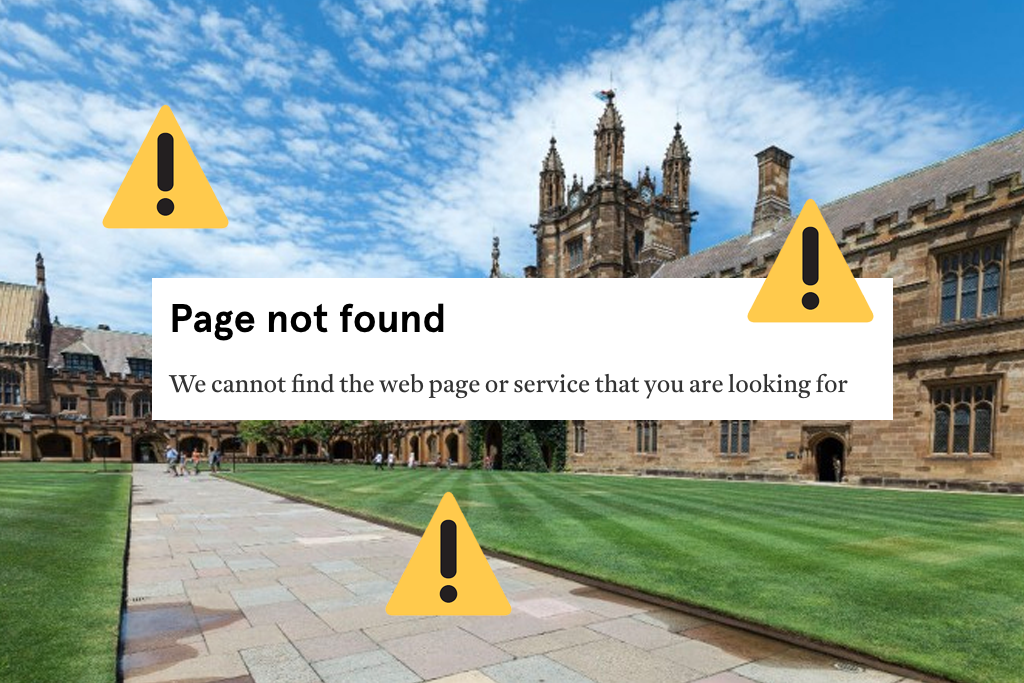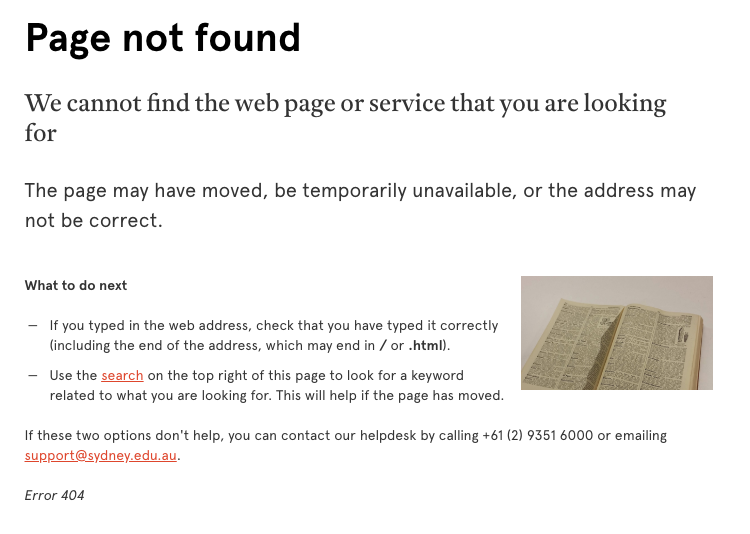The University of Sydney’s New Sexual Assault Reporting Tool Is Plagued With Errors
The portal's been live for two days, and broken for at least 24 hours.

Two days ago, the University of Sydney triumphantly launched a new sexual assault reporting portal, despite student concerns that it had been rushed to completion to meet an artificial deadline. And already, it’s looking like the students might have been right.
Overnight, students attempting to access the reporting system say they have been redirected to error pages, or wrongly logged into the portal as staff.
Junkee has been able to reproduce a number of the errors reported by students. When attempting to access the sexual assault reporting portal from Google, the link redirects to “page not found”. Attempting to access the portal from the university’s information page on sexual assault results in the connection timing out.

The error page that appears when students tried to access the sexual assault reporting form via Google search.
Meanwhile, one student who was able to access the portal found that she was treated as a staff member and not a student once she logged in. “I have never been a staff member or entered into any contract with the University, so I was completely bewildered,” she told Junkee.
Screenshots of the staff member portal she was directed to reveal additional problems: university staff are provided with options to report an incident on behalf of a student, or an incident they have witnessed, but there is no option to disclose harassment or assault that has affected them personally.
While IT have fixed this particular student’s login, she told Junkee she doubts she’s the only one having issues.

A screenshot demonstrating the limited options in the staff member reporting portal.
Students from the University of Sydney SRC are pretty pissed off about the errors, especially because they’ve spent the past few weeks requesting that the university slow down and address a whole bunch of pretty serious concerns about the new system. They’ve previously accused the university of racing to release the portal by the August 1 anniversary of a groundbreaking report on campus sexual assault, instead of prioritising releasing a system that worked well.
“We repeatedly advised the University that it would be unethical to proceed with the portal in its current form, to which they told us the portal would be reviewed in 3 months time,” said Madeline Ward, Women’s Officer at the USyd SRC.
“In the two days since its release the portal has been malfunctioning for at least 24 hours. This is entirely unacceptable. The issues with the portal are not so insignificant that they may be reviewed in 3 months: they are large, gaping holes in the very design of the technology that needed to be resolved before it was made available to students and staff on Wednesday.”
“We ask that the University of Sydney fix these issues immediately, rather than waiting for an arbitrary 3 month deadline and potentially re-traumatising survivors in the process.”
University of Sydney SRC President Imogen Grant had similar concerns. “This complete blunder was to be expected when the University rushed to meet an artificial deadline for a portal they knew had egregious flaws,” she said.
“By rushing to meet an artificial deadline, the University undermined the entire project, neglected meaningful collaboration and placed survivors in a position where they are bearing the brunt of a broken portal.”
The University of Sydney told Junkee that “we are aware of the problems and they are currently being investigated. Every effort is being made to fix the issues as soon as possible.”
As for why the release of the portal was rushed forward, the university spokesperson said “the timing of the release was because we wanted survivors to have access to it as soon as possible, on the understanding that there would need to be further development of the technology going forward.”